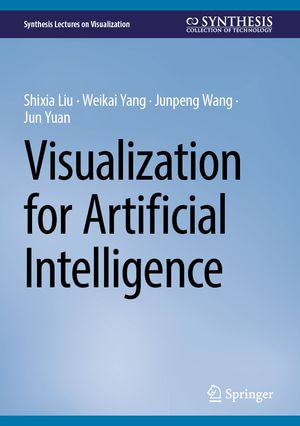
eTEXT
Visualization for Artificial Intelligence
By: Shixia Liu, Weikai Yang, Junpeng Wang, Jun Yuan
eText | 21 December 2024
At a Glance
eText
$64.99
or
Instant online reading in your Booktopia eTextbook Library *
Read online on
Desktop
Tablet
Mobile
Not downloadable to your eReader or an app
Why choose an eTextbook?
Instant Access *
Purchase and read your book immediately
Read Aloud
Listen and follow along as Bookshelf reads to you
Study Tools
Built-in study tools like highlights and more
* eTextbooks are not downloadable to your eReader or an app and can be accessed via web browsers only. You must be connected to the internet and have no technical issues with your device or browser that could prevent the eTextbook from operating.
ISBN: 9783031753404
ISBN-10: 3031753402
Series: Synthesis Lectures on Visualization
Published: 21st December 2024
Format: ePUB
Language: English
Publisher: Springer Nature
You Can Find This eBook In
This product is categorised by
- Non-FictionMathematicsProbability & Statistics
- Non-FictionComputing & I.T.DatabasesData Capture & Analysis
- Non-FictionEngineering & TechnologyTechnology in GeneralEngineering in General
- Non-FictionComputing & I.T.Computer ScienceArtificial IntelligenceMachine Learning
- Non-FictionComputing & I.T.DatabasesData Warehousing























